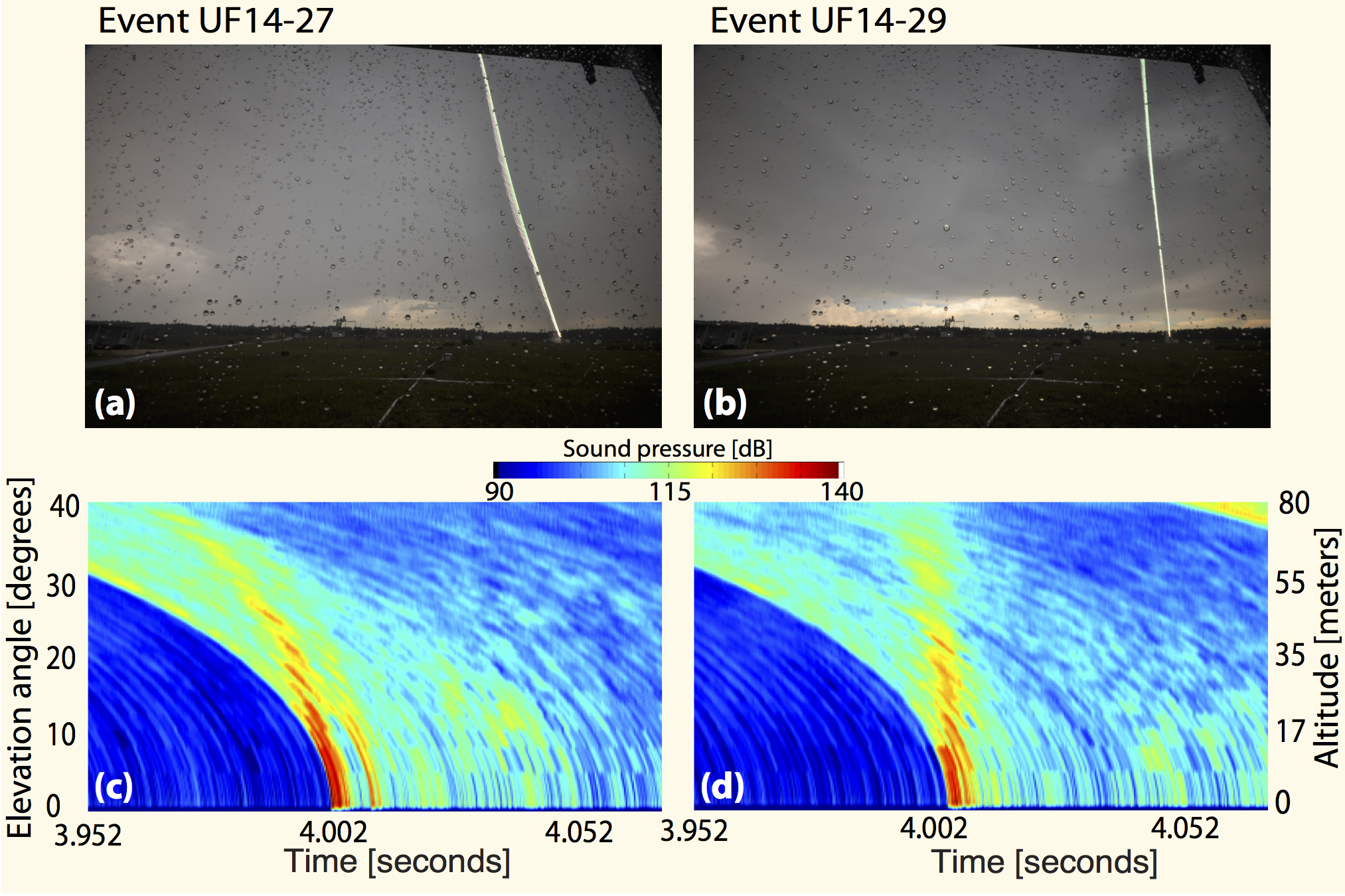Snapshot of a Storm: Scientists Capture 1st 'Image' of Thunder
Lightning strikes Earth more than 4 million times every day, but the physics behind these electric bolts and their accompanying thunder is still poorly understood. Now, for the first time, researchers have captured an "image" of thunder.
Scientists at the Southwest Research Institute (SwRI) in San Antonio, Texas, generated artificial lightning by launching a tiny rocket trailing a grounded copper wire into the clouds. In mere seconds, lightning struck, and the team captured the sound with an array of microphones.
By transforming the data into an image, the team was able to "see" thunder. "The initial constructed images looked like a colorful piece of modern art that you could hang over your fireplace," said Maher A. Dayeh, a research scientist in the Space Science Department at SwRI. [Electric Earth: Stunning Images of Lightning]
"While we understand the general mechanics of thunder generation, it's not particularly clear which physical processes of the lightning discharge contribute to the thunder we hear," Dayeh said in a statement. "A listener perceives thunder largely based upon the distance from lightning. From nearby, thunder has a sharp, cracking sound. From farther away, it has a longer-lasting, rumbling nature."
The team placed an array of microphones roughly 310 feet (95 meters) away from the small rocket's launch pad. When Dayeh first took a look at the images produced, he couldn't see the thunder whatsoever — its detailed sound signature was hidden in higher-frequency images.
The artificial lightning includes an initial strike followed by subsequent return strikes. For every lightning bolt seen, an “acoustic bolt” can be seen in the high frequency images.

Lightning first takes shape in clouds. As ice particles within the cloud collide and break apart, different size particles acquire different charges. The small, positively charged particles get pushed to the top of the cloud by updrafts of wind, while the large, negatively charged particles fall to the bottom of the cloud.
Sign up for the Live Science daily newsletter now
Get the world’s most fascinating discoveries delivered straight to your inbox.
This creates a huge electric potential within the cloud, which in turn builds up an electrical energy between the cloud and the ground. The latter causes negative charges to surge up from the ground to the cloud in a flash of lightning.
At that moment in time, the surrounding air is heated to a temperature that's three times hotter than the surface of the sun. This causes the air to expand immensely, sending a shock wave — thunder — rippling through the air. That's the simple version at least.
"Thunder and lightning are fascinating, wild and unpredictable," Dayeh said. "Because of their erratic nature, the phenomena are best studied using triggered events."
Dayeh and his colleagues studied thunder and lightning at the International Center for Lightning Research and Testing at the University of Florida, Gainesville, because Florida has more lightning strikes per year than anywhere else in the United States.
The researchers said they hope that future work will help tease out more information about how the crashing sound of thunder is generated.
Follow Shannon Hall on Twitter @ShannonWHall. Follow Live Science @livescience, Facebook & Google+. Original article on Live Science.









